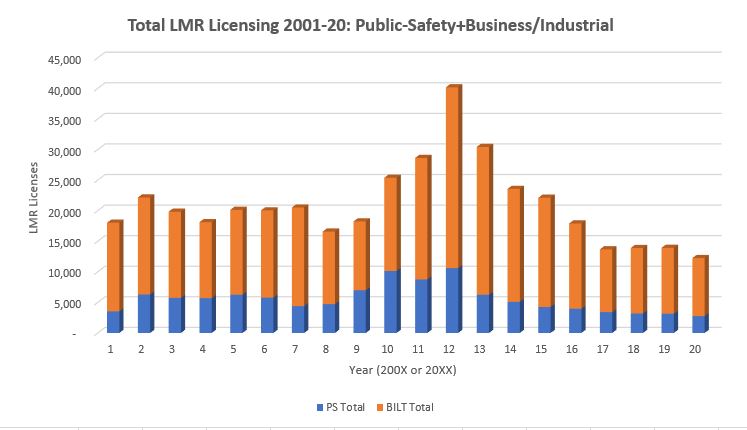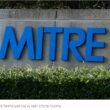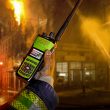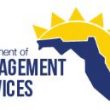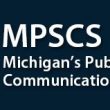New T-Band rules impact LMR licensing activity
A recent law change eliminating a planned FCC auction of T-Band spectrum (470-512 MHz) resulted in the resolution of many pending LMR license applications from past years and provided an early boost to activity in the space this year, although those figures remain near the pace of all-time low levels once again.
For the first time in nine years, licensees operating LMR networks operating on T-Band airwaves last month were able to submit hundreds of license applications to the FCC to expand the coverage footprint of their systems and make other modifications with a reasonable hope that the applications would be approved. That’s because the FCC lifted its freeze on T-Band licensing activity in the wake of a law change in late December that repealed a 2012 mandate that T-Band spectrum be auctioned this year.
This action resulted in several T-Band applications in recent years—many from Los Angeles County, as part of the regional P25 public-safety system being built there—being rejected outright, as opposed to remaining in limbo as they had for at least two years in some cases. Most or all of those once-pending applications have been resubmitted this year, according to sources familiar with the situation.
Such FCC policy changes did not alter the number of LMR applications granted, but it mean that only a handful of pending applications remain in the agency’s online ULS database, as opposed to more than 180 at the end of 2020. The revised 2019 numbers now show 3,052 public-safety applications granted for the year—a 4.4% decrease compared to 2018—and only 8 applications still pending. In 2020, an all-time low total of 2,758 public-safety applications were granted—a 9.6% decrease from 2019 and the sixth consecutive year in which a new all-time low in public-safety licensing has been established—with only 3 applications still pending.
Of course, the pent-up demand to make long-wanted change to T-Band systems generated a surge of LMR licensing activity last month, including 83 from Los Angeles County for its public-safety network submitted on March 22, the first day for T-Band submittal under the new rules. This injection of LMR license applications drove the public-safety total to 851 through yesterday—a pace that is ahead of last year but would be lower than any other year since the online ULS database was established in 2000.
The business-industrial sector did not have as large a percentage of pending applications directly affected by the T-Band rule change as the public-safety sector. However, via normal operations, the FCC has processed more than 600 business-industrial LMR license applications since the last IWCE’s Urgent Communications report about LMR licensing activity in January.
As of April 12, the FCC has granted 9,432 business-industrial applications for LMR licenses that were filed during 2020, while 49 such applications remain pending. If all applications were to be approved, the 9,481 applications would represent a 12.1% decrease compared to 2019 and would be 795 less than the previous low of 10,276 business-industrial application activity in 2017.
T-Band changes have affected the business-industrial LMR sector this year. Yet, even with this influx of T-Band applications, a total of 2,652 business-industrial LMR applications have been filed through April 12. If all of these applications were approved—a very unlikely scenario—and continued throughout the year, this licensing pace would result in an annual total almost identical to the 2020 licensing figures that represented an all-time low for the business-industrial sector.
During 2020, the public-safety and business-industrial sectors combined to file 12,244 LMR license applications. This figure represents a 69.5% decrease since the record year of 2012—acknowledged by most as an industry “bubble” driven by the FCC’s narrowbanding mandate during that year—and a 44.6% decrease in licensing activity compared to 2015.
Most industry analysts believe the COVID-19 pandemic significantly affected the 2020 LMR licensing numbers in the business-industrial sector, which was plagued by uncertainty and notable closures that reduced both the need for LMR communications and available funding to pay for system upgrades.
In contrast, the pandemic’s impact on public-safety licensing numbers was real—particularly in the spring of 2020, when some work was halted for logistical reasons—but not considered to be as great as it was on enterprises, given the lengthy planning and funding cycles for public-safety LMR networks, according to industry sources.
The maturation of push-to-talk-over-cellular (PoC) technology and carrier network options also is providing an alternative to LMR systems, particularly for certain enterprise sectors. At the moment, LMR technology—notably P25—continues to be the dominant push-to-talk platform for public-safety entities in the United States, although sources have cited anecdotal evidence of entities delaying long-term LMR decisions so they can evaluate PoC options like mission-critical push to talk (MCPTT) and private LTE networks.
Potential positive factors for LMR activity in 2021 include having the U.S. economy return to more normal activity, and multiple federal economic-stimulus packages. In addition, more T-Band activity also is possible. Existing licensees still have the opportunity to make changes to their systems, and the FCC could allow new licensees to create systems that operate on the airwaves, although that option likely would not be available until the second half of the year.
Another T-Band question that the FCC is expected to address is whether T-Band licensees will be required to meet the 2013 narrowbanding mandate that required other LMR systems operating on spectrum below 512 GHz to migrate from 25 kHz channels to 12.5 kHz—or equivalent—channels. If this occurs, a large system like the NYPD radio network would have to file new applications, although this action may not be executed this year.


